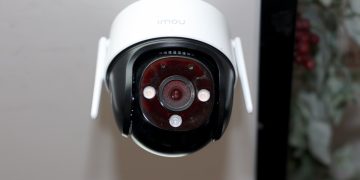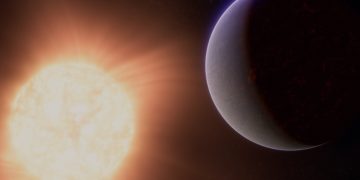ONE of the world’s most active volcanoes has erupted again in Hawaii, spewing nearly 1,000ft lava jets into the sky.
That’s nearly as high as the Eiffel Tower.

Each splutter of lava kicked out plumes of ash, volcanic glass and rock, which eventually reached nearly 5,000ft (1,500m) into the sky[/caption]

Within half an hour of the eruption starting on 25 May, the lava fountain out of the north vent reached 984ft (300m)[/caption]

Soon after, lava started shooting out of the south vent, reaching 820ft (250m) in height[/caption]
Footage of the six-hour-long eruption show spurting fountains of neon orange lava at Hawaii’s infamous Kilauea volcano.
It is the volcano’s 23rd eruption since December 2024 – and the biggest in this series of outbursts, according to the United States Geological Survey (USGS), which livestreamed the event.
Since its eruption late last year, Kilauea’s activity has been intermittent, with some displays lasting days.
What started as sporadic, thin jets of lava erupting from the north vent, turned into monstrous columns of lava.
Within half an hour of the eruption starting on 25 May, the lava fountain reached 984ft (300m).
Soon after, lava started shooting out of the south vent, reaching 820ft (250m) in height.
“Large lava flows erupted from both vents and covered about half of Halema’uma’u crater floor,” read a USGS update.
While the eruptions have been contained within the Hawaii Volcanoes National Park, experts have warned of toxic gas spreading into populated areas.
Each splutter of lava kicked out plumes of ash, volcanic glass and rock, which eventually reached nearly 5,000ft (1,500m) into the sky.
Scientists at the USGS said the volcanic gas could travel downwind and cause respiratory issues in high-impact areas.
“High levels of volcanic gas—primarily water vapor (HO), carbon dioxide (CO), and sulfur dioxide (SO)—are the primary hazard of concern, as this hazard can have far-reaching effects downwind,” they wrote.
“As SO is continuously released from the summit during an eruption, it will react in the atmosphere to create the visible haze known as vog (volcanic smog) downwind of Kīlauea.
“SO and vog may cause respiratory and other problems at high concentrations.”
People may also experience skin and eye irritation as a result of the flows.
Pele’s hair – thin strands of volcanic glass – can float through the air and puncture skin, like a wood splinter.
No residential areas have been affected by the lava flows.
The eruption has since subsided, but experts believe another outburst may occur soon.





























